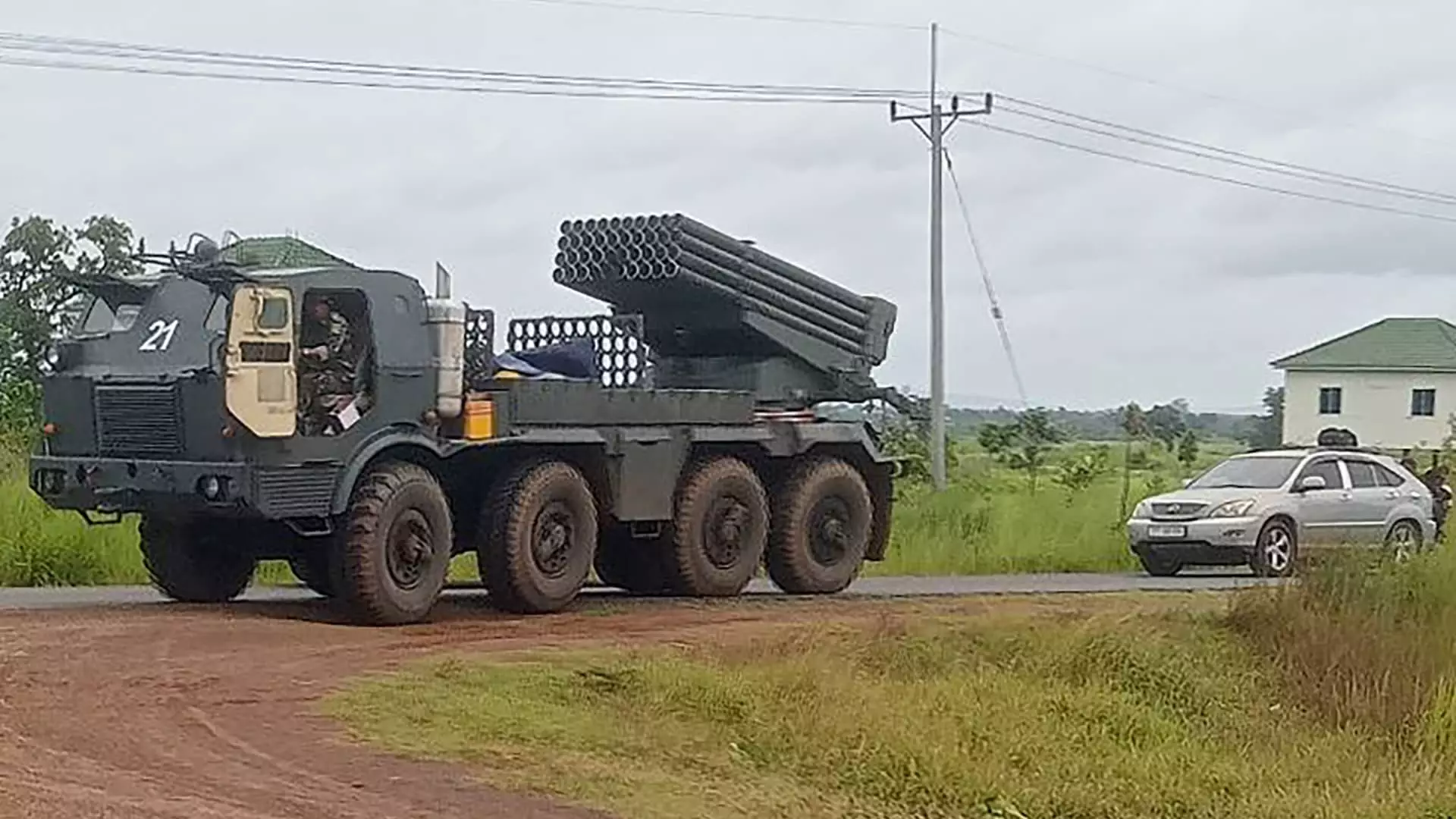The ongoing border clashes between Thailand and Cambodia mark more than just a localized territorial dispute; they threaten the fragile fabric of Southeast Asia’s socio-economic stability. While both nations are embroiled in a conflict that showcases a sharp escalation of military engagement, the deeper implications extend into their economic core, especially sectors that power their growth—tourism, in particular. The situation embodies a complex interplay of geopolitical tensions and economic dependencies that could potentially ripple throughout the region if left unchecked.
The recent exchange of artillery fire and diplomatic fallout symbolize a significant deterioration in relations, fed by longstanding disputes over border delimitations and the tragic killing of soldiers. Both nations are resorting to high-stakes military posturing—Thailand deploying fighter jets and Cambodia using rocket systems—indicating a conflict of heightened intensity. Such displays not only deepen the hostilities but also threaten to spill over into broader instability, creating a cloud of uncertainty over the region’s prospects in the coming months.
What makes this conflict particularly alarming is its potential impact on economic sectors vital for both countries. Tourism, which fuels millions of livelihoods, is especially vulnerable. For Thailand, a nation accustomed to welcoming over 35 million tourists annually, the risk of unrest near the border—even if geographically distant from primary tourist hubs—can tarnish its image as a safe destination. Tourist confidence is an intangible yet powerful asset, and perceptions of instability, no matter how localized, can lead to decreased travel and economic slowdown. This is especially critical in 2024, when Thailand is arguably banking on tourism-led recovery after the pandemic’s devastating blow.
Cambodia’s reliance on tourism, though smaller in scale, makes it uniquely susceptible to similar threats. The country’s tourism sector contributes around 9% of its GDP, welcoming roughly 6.7 million visitors last year. But unlike Thailand, Cambodia lacks the financial buffers and policy tools to cushion sudden shocks. Its limited fiscal reserves and less diversified tourism promotion infrastructure mean that even short-lived disruptions can have lasting effects on economic sentiment and recovery prospects. The border closures and security concerns directly impact cross-border trade and gambling tourism, which are significant revenue sources, further straining Cambodia’s economic resilience.
Diplomatic Fallout and Rising Militarization: Signposts of Deeper Instability
The recent diplomatic rift—marked by the recall of ambassadors and expulsion of envoys—underscores how deep the conflict has penetrated into diplomatic channels. Such diplomatic downgrades intensify the perception that the dispute might spiral into a broader regional crisis. The military escalation, with both sides employing advanced weapon systems, signals that this is no longer a mere border skirmish but a conflict with the potential for prolonged and devastating engagement.
International responses, notably from the United States, have expressed concern but lack direct leverage to prevent escalation. The deployment of sophisticated military hardware suggests that both Bangkok and Phnom Penh are willing to risk much for tangible territorial claims. This brinkmanship, driven by nationalism and historical grievances, complicates efforts for de-escalation. Experts warn that while a full-scale war appears unlikely at this stage, the risk of a protracted military standoff cannot be ruled out if both nations double down on their hardline stances.
The challenge lies in disentangling the intertwined complexities of national pride, territorial sovereignty, and regional geopolitics. As both countries rally nationalist sentiments, diplomatic solutions become ever more elusive. The escalation emphasizes that the conflict’s resolution—if it is to occur—must involve nuanced diplomacy bolstered by regional and international mediators. Yet, given the current climate, the prospects for quick peace remain slim, and the economic fallout intensifies with each passing day.
The Broader Economic and Political Implications: A Fragile Equilibrium
While analysts generally agree that Thailand’s economy might endure the immediate effects of this conflict due to its more diversified and resilient tourism sector, Cambodia’s position is considerably more precarious. The wariness surrounding Cambodia’s stability stems from its comparatively limited economic buffer and a less developed tourism infrastructure, making it more vulnerable to the shocks of regional conflict.
Furthermore, border closures have already disrupted cross-border economic activities such as gambling and trade, which form a critical part of Cambodia’s informal and formal economies. Thailand’s border provinces, often peripheral and less reliant on tourism, are not likely to suffer immediate effects; however, the wider regional perception of instability could reduce inbound tourists and international investments over time, creating a persistent economic drag.
The regional context further complicates matters. Ongoing tensions in the South China Sea and crises like Myanmar’s protracted conflict continue to undermine regional stability. These issues are interconnected; heightened nationalism and military posturing in one hotspot often embolden similar sentiments elsewhere, creating a geopolitical climate where escalation becomes a tangible threat.
Although some analysts suggest that both nations have strong internal incentives to avoid prolonged conflict—such as economic stability and political legitimacy—the current situation’s volatility raises doubts. The deployment of heavy weapons systems and inflammatory rhetoric push the region closer to the brink. The risk of regional spillover, especially if the conflict widens or persists, is an unsettling prospect for Southeast Asia’s economic and political future.
Ultimately, this border conflict sheds light on an unsettling truth: Southeast Asia’s progress toward regional stability remains fragile, weighed down by historic disputes and contemporary nationalist fervor. The long-term economic health of the region hinges on resolving these tensions peacefully. Until then, the specter of conflict will continue to haunt hopes for a more integrated and prosperous Southeast Asia.

